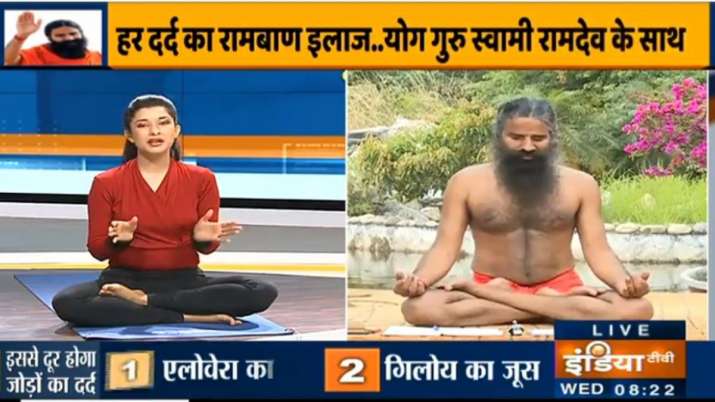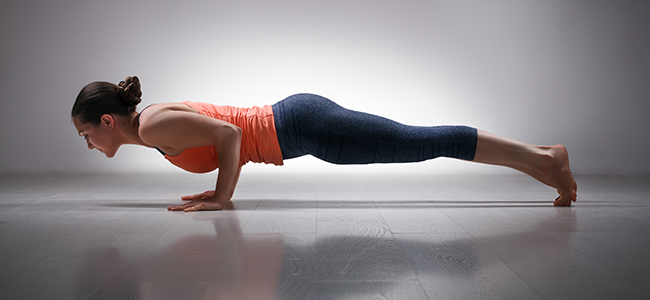
Yoga is an excellent way to increase your flexibility. It can reduce stiffness and pain in the joints. It's common to feel restricted if you're just starting the practice. This inflexibility can cause poor posture or strain on the knee joint. It also reduces levels of dopamine and serotonin, which are neurotransmitters that improve mood and reduce stress.
Yoga can help with chronic low back pain. One study showed this. This condition is common among veterans, and can seriously impact a person’s life quality. Participants in the study reported lower disability scores and intensity after a 12-week-long yoga program. Additionally, their use of opioids declined, which is a big benefit to those who suffer from chronic low back pain. The benefits of yoga have been extensively documented.
Yoga can be a great way to reduce stress. They can help improve your overall health and flow of lymph. You'll improve your lymph drainage system through practice. This is an important part of your body. The lymphatic system is responsible for preventing infection, destroying cancer cells, and disposing of toxic waste products. Regular yoga practice can reduce stress and improve your sleep quality.

Stress can cause constipation. Yoga can reduce it by improving your posture. It also decreases suffering, which can be a huge benefit. Stress is a key contributor to bowel problems. Practicing yoga can help relieve your constipation. Your ability to focus and learn is improved by practicing yoga.
Studies have also indicated that yoga can improve heart health. It has been shown that yoga can increase hemoglobin, the protein that carries oxygen into the tissues. This is another beneficial effect of yoga. Yoga can improve your heart health and reduce the chance of stroke and cardiovascular disease. It has been shown in studies to improve the flexibility and muscle strength of the hands and feet. It can also improve balance, which is important for a variety of reasons.
Yoga can also have benefits for the spinal disks. The discs in the spinal canal between the vertebrae prevent herniated nerves from compressing and herniating. The discs of the spine are mobile by moving these discs. Therefore, it's essential to practice a variety of yoga poses to maintain your spinal health. It is possible to improve the flexibility of your muscles by performing asanas in this pose.
Yoga has many benefits. It can help you combat depression and anxiety. In a 2015 study, researchers discovered that yoga-practicing participants had lower stress levels. They also had better cardiovascular function. This makes them less susceptible to heart disease. Although it is a small advantage, this is the most significant. As an added bonus, it helps them feel better about themselves and their bodies.

As with other forms of exercise yoga improves your heart. This is due to the fact that it helps pump blood throughout your body. It is responsible for improving the health of the heart. This reduces the chance of developing heart disease. Yoga can improve your cardiovascular health and lower your risk of developing heart disease. You don't have to do this exercise.
In addition to promoting physical health, yoga can also reduce the symptoms of heart disease. It slows down the progression in cardiovascular diseases by reducing cholesterol levels and other inflammatory substances. It has even been shown to reverse DNA reactions and lower cortisol. It can help prevent heart attacks, migraines, and osteoporosis. It's also good for your mental health. It can help you manage stress and improve focus.
FAQ
What if I exercise and drink alcohol?
Yes. Alcohol increases energy expenditure, speeds up recovery times, and reduces soreness.
Additionally, alcohol can increase insulin sensitivity and make it easier to absorb glucose.
However, alcohol can cause dehydration, which can slow down your metabolism. It can also decrease testosterone production, which can affect muscle-building ability.
It is important that women refrain from drinking alcohol before they exercise. Women who are heavily alcoholic should wait at minimum 24 hours before starting to work out.
Women who are nursing should avoid alcohol as much as possible.
Men should have no more than one drink per day.
Is Yoga Beneficial?
Yoga has been around since ancient times and has gained popularity recently. Celebrities, as well as everyday people who are looking to stay fit and healthy, have made yoga a hugely popular choice.
Yoga is great for strengthening your muscles and stretching them. Yoga can also help calm your mind and relax you.
Yoga is different from other types of exercise in that it focuses on breathing techniques.
For balance and flexibility, there are many poses you can do.
Is it true that overeating protein causes kidney stones?
Protein helps to maintain healthy bones, tissue, and skin. However, too much protein can result in calcium excretion through the urine. This can lead to kidney stone formation.
It is important that you note that not all people develop kidney stones when they consume more than 2 grams of protein per kg (2.2 pounds). You don't have to eat a lot of protein to get kidney stones.
By being careful with your sodium intake, you can prevent kidney stones. Sodium regulates the water balance of the kidneys. Too much sodium results in a higher risk of developing kidney stones.
You may also want to reduce your protein intake in the event of kidney stones. About half of adults' daily caloric intake is made up of protein. If you cut back on protein, you'll likely lose weight.
If you do decide to eat more protein, don't go overboard. Try to eat less than 20% protein in total calories.
Statistics
- Cardmembers earn 5% Back at Amazon.com with a Prime Credit Card. (amazon.com)
- An estimated calorie range for moderately active adult males falls between 2,200 to 2,800 calories per day, depending on age. (eatright.org)
- According to the American Heart Association, blood pressure should be checked at least once every two years, beginning at age 20. (my.clevelandclinic.org)
- Get free shipping and 25% off today. (healthline.com)
- Candidates and applicants must pass all four tests at 70% (minimum level) to graduate from Basic Deputy U.S. Marshal (BDUSM) Training. (usmarshals.gov)
External Links
How To
How can I burn fat and exercise?
Exercise reduces calories by increasing metabolism, and oxygen consumption.
Moderate intensity exercise is a safe way to lose weight.
These are the top tips for burning fat while you exercise.
-
Do cardio exercises such as walking, swimming, jogging, cycling, running, or elliptical training.
-
Three times per week, exercise for 30 minutes.
-
Strength training is a great way to lose weight.
-
Avoid intense exercise. You can build muscle without having to lose muscle tissue.
-
Drink plenty of water during exercise. Water is essential for flushing out toxins and keeping your body hydrated.
-
Choose low-fat protein shakes after working out. Protein shakes repair muscles and increase energy.
-
So you don’t feel hungry, eat smaller meals throughout your day.
-
Don't skip breakfast! Skipping breakfast can make you tired and sluggish.
-
Mental health is important. Stressful situations can affect your metabolism.
-
Keep a positive attitude. Studies show that people who believe they are overweight gain more weight then those who think they are attractive.
-
Get enough sleep. It is harder to lose fat if you don't get enough sleep.
-
Stay active. Get up every hour and get moving.
-
Maintain a healthy diet. You will feel fuller longer if you eat right.
-
Find ways to relax. A tense mind doesn't allow your body to release stress hormones that break down muscle tissue.
A balanced diet includes all essential nutrients needed for growth and development.
Instead of eating three large meals a day, eat six smaller meals every day. This gives your body more time to digest the food you eat.
For strong bones, we need 500 mgs of calcium daily. Calcium is available in dairy products like milk, yogurt, fortified soy beverages, orange juice, cereal, bread, and cereals.
Calcium comes from leafy green vegetables, beans, tofu, nuts, seeds, and cheese.
Vitamin D is required by the body to absorb calcium. Vitamin D can be found in egg yolk, fatty fish, and other fortified foods.
Vitamin E is important for skin health. Vitamin E is found in vegetable oils and wheat germ oil, as well as peanuts, almonds and sunflower seeds.
Your body needs zinc to maintain normal immune function and heal wounds. Zinc can be found as a mineral in oysters.
Zinc deficiencies can lead to fatigue, decreased appetite, depression, and reduced immunity.
Sugar intake can lead to insulin resistance which causes blood glucose levels to rise. Insulin resistance can lead to weight gain.
Insulin resistance develops when there are high levels of free radicals in the bloodstream. Free radicals are molecules with unpaired electrons that damage cell membranes and other parts of the body.
The main sources of free radicals are food additives.
Free radicals can lead to cancer and heart disease, diabetes mellitus, arthritis, asthma, and premature aging.
Eating a well-balanced diet with antioxidants is the best way to prevent free radical damage. Antioxidants protect against oxidative damage.
Vitamin C can be found in citrus fruits. Beta carotene can be found in carrots. Sweet potatoes. Tomatoes. Carrots. Sweet potatoes. Spinach. Broccoli. Cantaloupe. Vitamin E is found in nuts. Olive oil, avocados.
Selenium, manganese (and zinc) are other antioxidant nutrients.
Selenium protects cells from free radical damage. Selenium is found in Brazil nuts, tuna, liver, kidney, shrimp, cod, turkey, beef, lamb, pork, and chicken.
Copper protects eyes, brain, lungs and red cells. Copper can be found in meat, shellfish, meat, and organ meats.
Manganese forms an essential part of bone structure. Manganese is found in brown rice, spinach, bananas, prunes, raisins, oatmeal, and lentils.
Zinc helps with normal growth, reproduction, as well as wound healing. Zn is found in lean cuts of meat, white fish, poultry, and eggs.